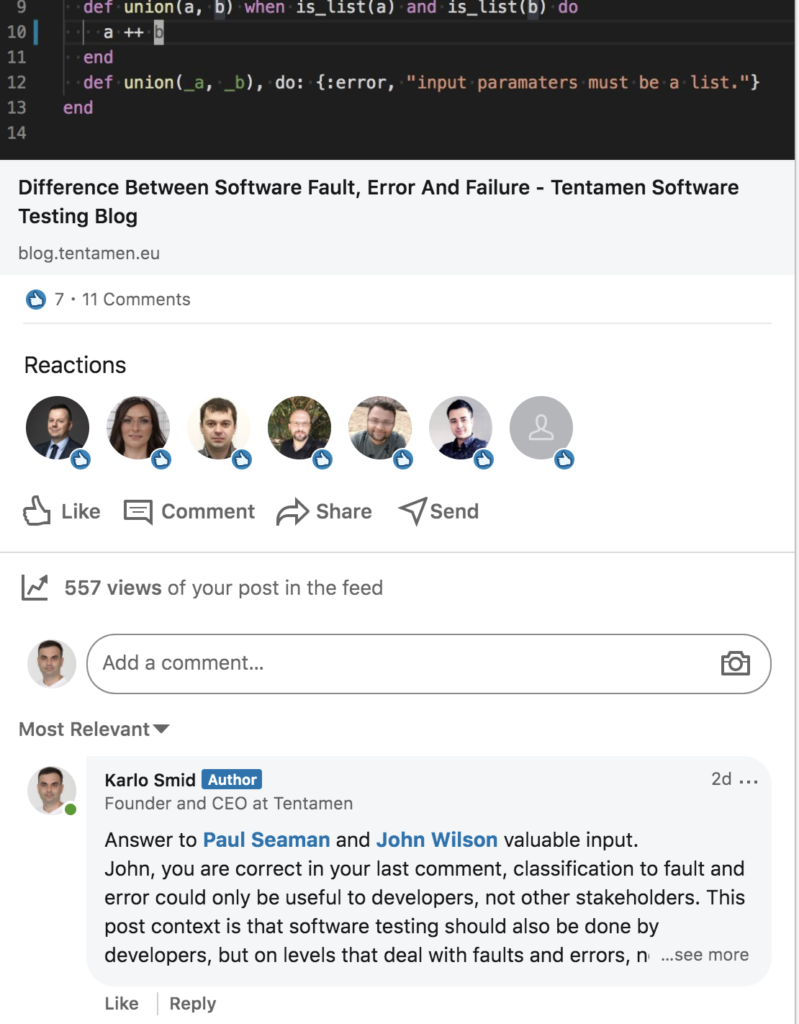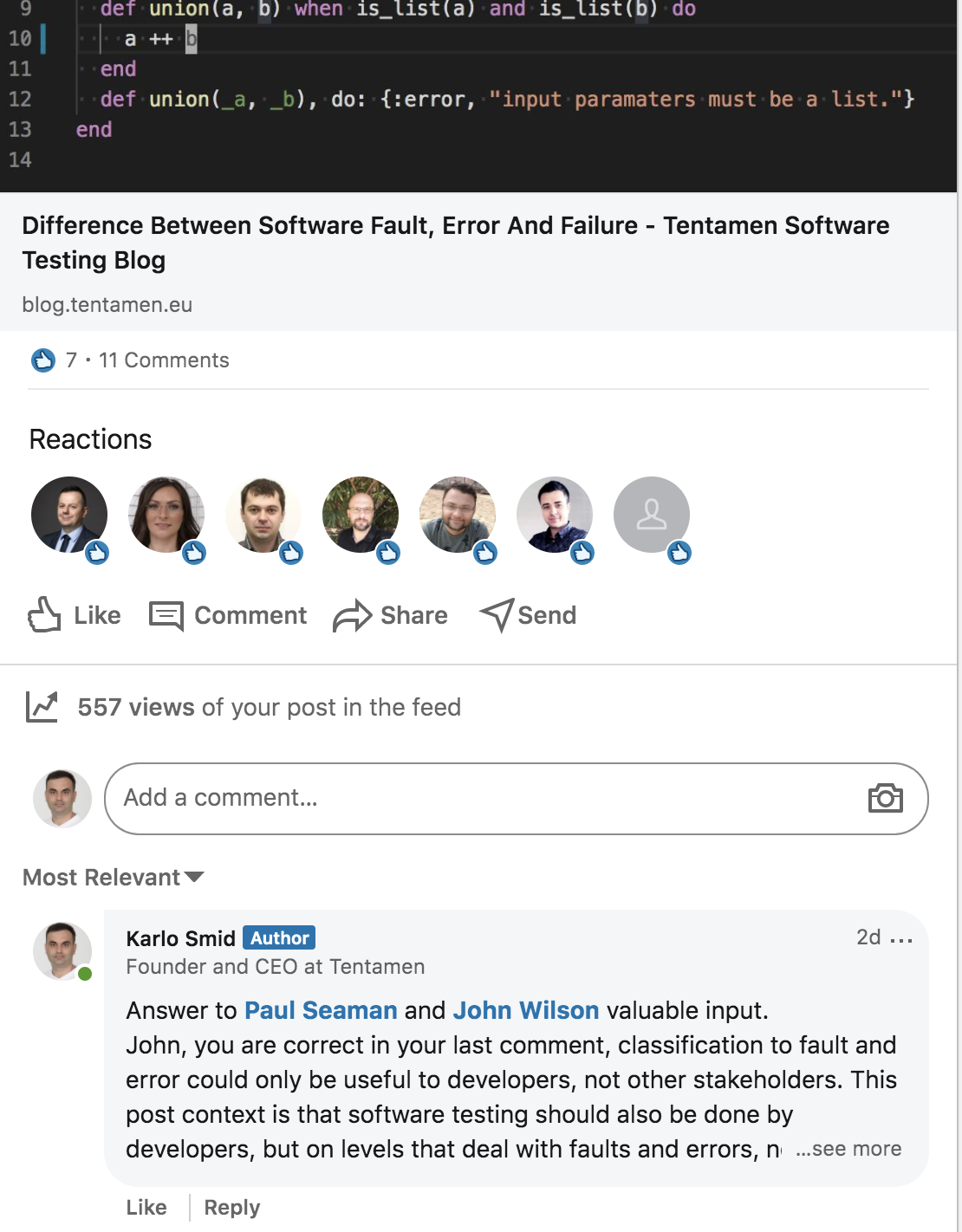
TL;DR
In the previous post, we explained how software fault, error, and failure differ from each other. In that post, we did not provide the context where this classification is useful. Thanks to the community, we got feedback on this post that was valuable in explaining the context where software fault, error, and failure are helpful. We will introduce you to software testing based on the remarkable book, Introduction To Software Testing by Paul Ammann and Jeff Offutt.
How To Accept A Feedback
When you write a blog post and comments are enabled, you need to be prepared to accept feedback. The most useful feedbacks are ones that ask follow up questions or ones that do not agree with your’s blog post message. The problem is that you can not receive that feedback in person, along with visual communication clues of feedback providers. From textual feedback and disagreement with your topic, you could perceive feedback as hostile.
It is essential to dismiss any emotion at that time and concentrate on the feedback message. Remember that person who provided feedback took their time and energy to read your post and to provide feedback. If they did that, their intention is not hostile but to get started a conversation to learn more about blog post topics.
Context For Fault, Failure, And Error
Paul Seaman and John Wilson provided valuable input on my post on software faults, errors, and failures. They both asked for the context where the classification of fault, error, and failure could be useful.


Classification to fault and error could only be useful to developers, not other stakeholders. This post context is that software testing should also be done by developers, but on levels that deal with faults and errors, not failures. For failures, we have testers, technical, and business-oriented. Faults and errors could be determined during the code review of code and unit tests by other developers. The code review is verification software testing that is done by developers. Validation is done by software testers (definitions are also in the blog post).




Comments are closed.